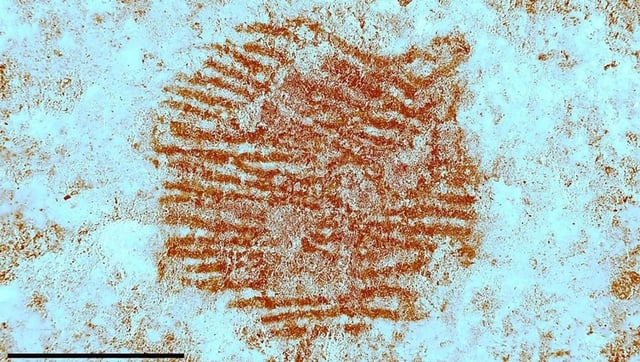Overview
- The research team published their analysis in May 2025 after studying a 43,000-year-old granite pebble unearthed at Spain’s San Lázaro rock shelter in July 2022.
- The stone bears the most complete Neanderthal fingerprint yet discovered, impressed in red ocher applied to depressions that form a face-like pattern.
- Geochemical analysis shows the pigment’s iron oxides and clay minerals originated outside the cave, implying Neanderthals sourced and transported materials deliberately.
- The pebble was carried from the nearby Eresma River and shows no wear from tool use, supporting its interpretation as a non-utilitarian, symbolic object.
- The study positions this find as one of Europe’s oldest examples of portable art and suggests Neanderthals shared modern humans’ capacity for abstract and symbolic thought.


